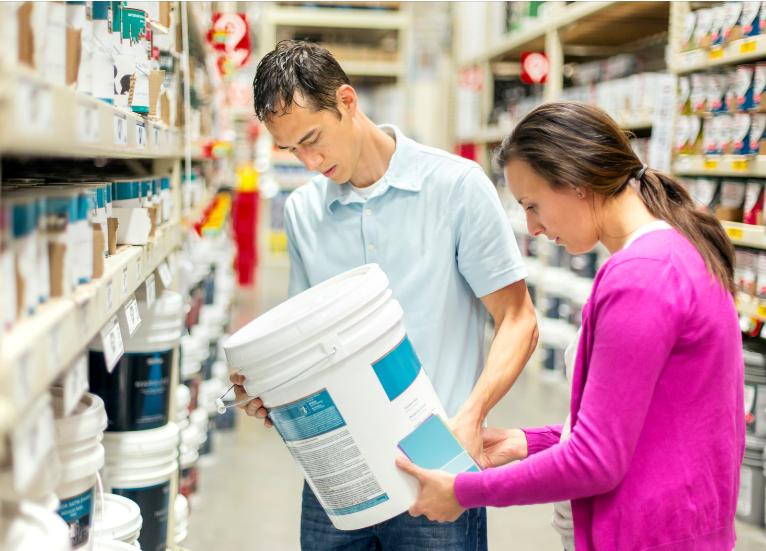
Selecting the ideal paint type involves more than just picking the perfect shade of color. Your paint project’s success or failure may depend on the sheen you choose.
Some sheens might be problematic when painting a rough or otherwise poor surface since they are glossy and reflect light.
But flat paint might be challenging to maintain and make your space look overly dreary.
Paint Type
Flat Paint
When working with harsh surfaces that contain cracks, nail holes, etc., flat paint, sometimes referred to as matte paint, is a wise choice.
It is excellent for hiding surface imperfections and underlying colors because flat paint has virtually no gloss. As well as toning down bold and bright colors, especially in spaces with low lighting, makes them seem more livable.
However, flat paint has minimal washability and durability. The porous texture of the color makes it difficult to clean since dirt gets trapped within it.
Scrubbing or using cleansers could damage the paint because it’s less resilient than glossier finishes.
What is the best time to use flat paint?
We should use it in low-traffic areas such as ceilings, dining rooms, and bedrooms.
Eggshell Paint
Eggshell paint has a little higher shine than flat paint. Its name derives from the shine, which is reminiscent of an eggshell.
A flat finish is less washable and less durable than an eggshell finish, which has a subtle sheen or gloss.
It’s a tremendous all-around paint because it’s durable and low-luster so you can use it in almost any house.
A professional recommends eggshell paint for medium-traffic areas such as hallways, kids’ bedrooms, living rooms, and laundry rooms because it resists stains better than flat paint.
Despite being more accessible to clean than flat paint, it isn’t easy to maintain.
Eggshell finishes provide a subtle shine appearance with added durability and are an excellent choice for those unsure about the paint finish they should choose.
Satin Paint
On the shine/gloss spectrum, satin finishes are in the middle. Unlike eggshell finishes, satin finishes are easy to wipe down as they offer excellent washability, scrub resistance, and durability.
Your busier living spaces will benefit from this type of sheen. We recommend the satin finish for medium to high-traffic areas such as kitchens, bathrooms, laundry rooms, living rooms, and hallways.
Despite not being too glossy, it shows imperfections just enough.
Semi-Gloss Paint
Semi-gloss is a good option if you want a high-sheen finish.
The semi-gloss finish creates a luminous look that cures to a smooth, furniture-like surface.
Since the light reflectance will stress imperfections, it’s not recommended for surfaces with defects.
Besides painting trim, doors, millwork, cabinets, or furniture, it is excellent for highlighting architectural details and adding depth to a room.
A semi-gloss finish cures to a furniture-like finish, making it one of the most durable sheens.
High-Gloss Paint
The high-gloss finish features the highest shine of the five finishes, as its name suggests.
It reflects more light than any other paint finish and can create a mirror-like finish with a beautiful, classy gloss.
It is also highly resilient and straightforward to clean. We frequently used high gloss finishes in high-traffic areas such as trim, doors and millwork, cabinets and furniture, wainscoting, etc. They are comparable to semi-gloss finishes.
It can give a space depth and interest. Designers frequently used this mirror-like surface to highlight a wall or to create a distinctive ambiance.
For instance, paint the ceiling the same color as the walls but with a more excellent gloss to provide a lux accent.
In addition, accent furniture or kitchen cabinets might have a lacquer-like surface thanks to the application of high-gloss paint.
Similar to semi-gloss paint, you shouldn’t apply it to areas that are not entirely smooth because the amount of light it reflects will draw attention to any imperfections.
Final Word
The first part of the puzzle is choosing the paint colors. Your paint project’s success or failure may depend on the sheen.
Eggshell and flat paint might help you cover up flaws, but they can be problematic if you expect the painted area to become soiled.
Glossy paint is considerably simpler to clean but is less effective at masking flaws.

























